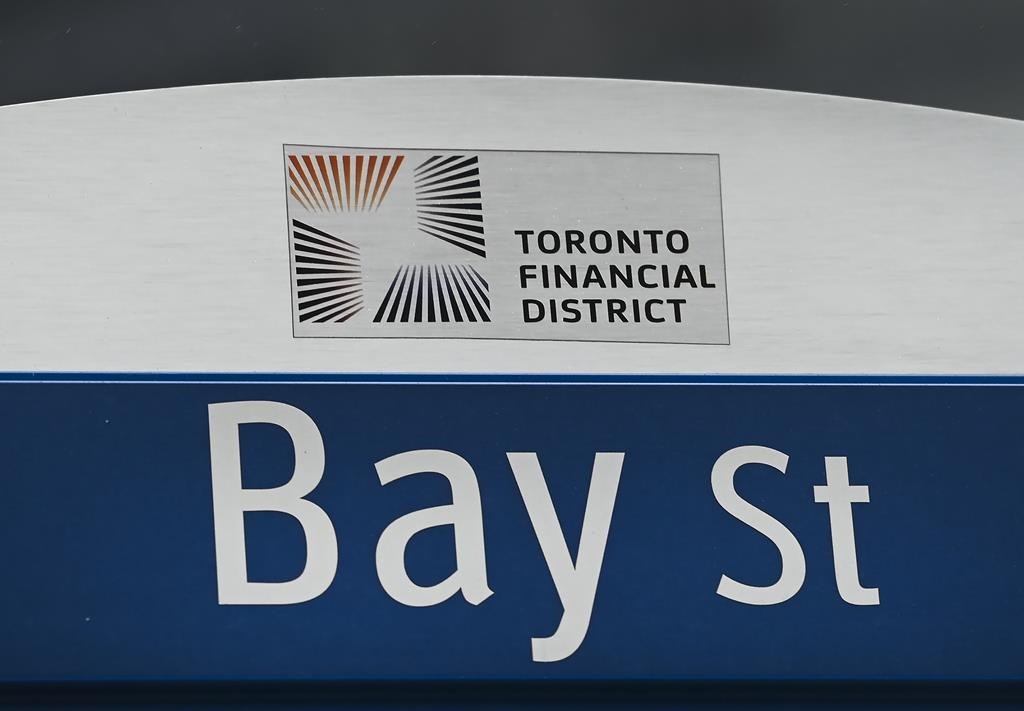Canada’s main stock index posted a small loss Friday, with broad-based weakness led by metals and tech, while U.S. markets eked out slim gains amid ongoing concern about interest rates.

The S&P/TSX composite index closed down 57.43 points at 20,074.65.
In New York, the Dow Jones industrial average was up 75.86 points at 34,576.59.The S&P 500 index was up 6.35 points at 4,457.49, while the Nasdaq composite was up 12.70 points at 13,761.53.
After a weaker August following a tech-driven rally in the first half of the year, markets seem to be under pressure heading into September, said John Zechner, chairman and lead equity manager at J Zechner Associates.
The issue weighing on markets is an ongoing realization that interest rates will likely have to stay higher for longer, he said.
With oil prices continuing to climb, nearing US$88 per barrel Friday, inflation could tick up this fall, said Zechner, putting more pressure on central banks. The economic data trickling in is sending a mixed message of a cooling economy but still-surprising strength, he said.
“The markets are sort of digesting all of this and just coming to the realization that maybe they’ve been a little too optimistic on the rate side,” said Zechner.
The latest Canadian labour market report showed more jobs were added to the economy than expected in August, while the jobless rate held steady at 5.5 per cent, ending a three-month streak of rising unemployment.
- TSX flat as oil falls, U.S. stock markets mixed after Fed holds interest rates steady
- Panthers head back to work, resting and waiting for Bruins-Leafs winner
- Proline bettors still solidly behind Toronto Maple Leafs in NHL playoffs
- Ontario introduces sped-up apprenticeship path for high school students
But investors were much more taken aback by the latest GDP numbers for Canada’s second quarter, which posted a surprising contraction last week, said Zechner: “No-one was expecting a negative number.”
Overall, investors are struggling with a mix of economic data, longer-term interest rate expectations, and concerns about a weakening consumer, he said.
“You don’t want the data too strong or else you’re going to get even higher rates for a longer period of time. But on the other hand, you know, earnings are at risk if it accelerates too much to the downside too quickly.”
Now that the Bank of Canada’s decision to hold rates is out of the way, attention is turning to the U.S. Federal Reserve later this month. They’re all but certain to also hold, said Zechner. But the bigger question is whether another rate hike is on the table later this year in the U.S.
“They want to make it look like it is, because they just don’t want to take the chance that they could reaccelerate inflation,” he said.
“They just don’t want to light a fire under this. So it is a balancing act.”
But the market isn’t quite buying into the ongoing hawkish rhetoric from central banks, and may still be too optimistic, said Zechner.
“The market is buying into the scenario that growth is going to slow down, inflation will moderate and by … the middle of next year, they’ll be cutting rates.”
That optimism could pose a risk to the overall market, he said.
The Canadian dollar traded for 73.36 cents US compared with 73.13 cents US on Thursday.
The October crude contract was up 64 cents at US87.51 per barreland the October natural gas contract was up three cents at US$2.61 per mmBTU.
The December gold contract was up 20 cents at US$1,942.70 an ounceand the December copper contract was down five cents at US$3.72 a pound.



Comments